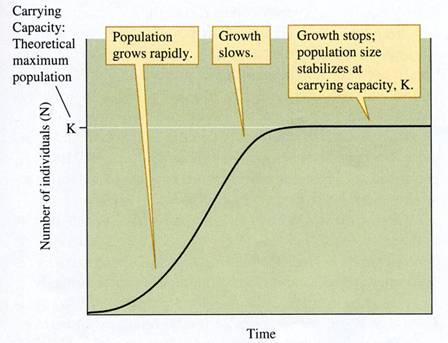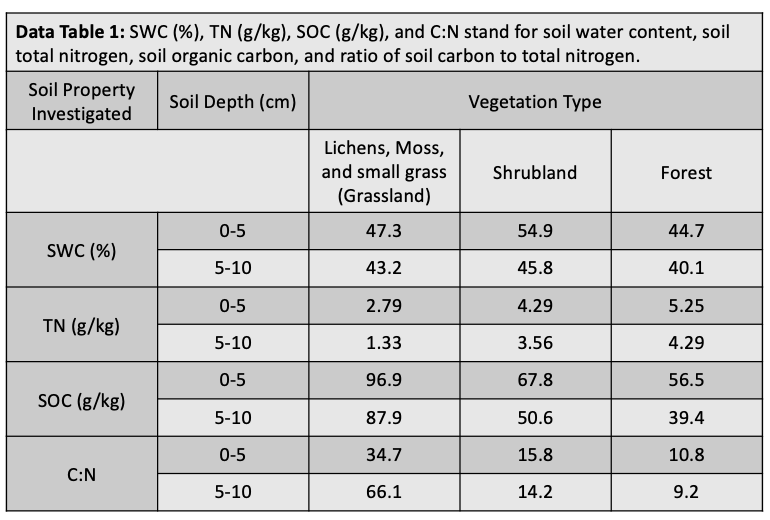Name one type of fossil fuel
Coal, Oil, Natural Gas
The term used to describe the process by which living things colonize barren landscapes over time
Ecological Succession
Name the process that increases the temperature of this planet
The Greenhouse Effect
Name one energy source that is nonrenewable
Fossil Fuels
Define the term Ecosystem
Any community of abiotic and biotic things that work together.
What human activity produces the most greenhouse gas emissions on this planet?
Burning Fossil Fuels
Why is nitrogen such a critical element for plants to obtain from the soil?
Because nitrogen is used to make DNA and Proteins. With out Nitrogen, plants would die.
Name the 2 major products of photosynthesis
Oxygen and Glucose
Describe one thing that could be done to reduce carbon emissions.
1) Use renewable energy sources
2) Stop chopping down trees
3) Reduce red meat consumption
4) Reduce fossil fuel emissions
Name 3 abiotic factors and 3 biotic factors in this room.
Desk, Shoe, Computer
Toni, Plant, Bugs
Name 2 greenhouse gases
Carbon Dioxide
Methane
Why is primary succession necessary?
Primary succession is necessary because the soil cannot support complex producers at first. This is especially true of the quantity of nitrogen in the soil.
Name of the process that produces chemical energy in living things. Also, what is the major byproduct of this process.
Cellular Respiration and CO2
Describe how Plants and Animals balance each other out in relationship to carbon.
Animals need oxygen to perform cell respiration and make chemical energy. CO2 is a byproduct.
Plants need CO2 to perform photosynthesis to make glucose. Oxygen is a byproduct.
Draw an example of a graph that shows a population reaching its carrying capacity. Label the part of the graph that has "unlimited resources" and label the "carrying capacity"

What are fossil fuels made out of?
They are made from decomposed algae and plants that were hardened from pressure and heat over millions of years ago.
Describe a Climax Community.
A biological community of plants, animals, and fungi which, through the process of ecological succession, a diverse array of species have emerged. Tertiary consumers are present and thriving in this community
How do decomposers contribute to carbon sinks while also being a carbon source?
1. Decomposers breakdown dead material which results in carbon seeping into the soil and getting buried. Over time, this dead material can become fossil fuels.
2. Decomposers are living organisms, and therefore do cellular respiration to make energy. They release CO2 during this process.
Name three carbon sources
1. Plants
2. Fossil Fuels
3. Oceans
Name 3 population dependent limiting factors and 3 population independent factors in an ecosystem
Dependent: food, shelter water, mates, disease
Independent: flood, drought, hurricane
Name two ways in which greenhouse gases affect the carbon cycle
1. Greenhouse gases warm the planet... therefore this warming will likely kill many primary producers, which are the bottom of the energy pyramid.
2. Excess greenhouse gasses slow down the carbon cycle because there are only so many sinks that can take in the carbon. Therefore, the planet will start to warm because of all the atmospheric carbon.
If there were lightening strikes that took place in the Shrubland consistently over 100 years, how much total nitrogen would you predict to be present in the Forest? Use actual data from the data table to make your prediction AND explain why you are making this prediction.

At a soil depth of 0-5cm, I predict there to be more than 5.25 g/kg of total nitrogen in the soil.
I am making this prediction because lightening strikes increase the amount of nitrates put into the soil. They turn atmospheric nitrogen directly into nitrates. Therefore, we would predict there to be even higher levels of total nitrogen in the soil than what we observe in the current data table.
Name 5 places where carbon is stored.
Name 6 ways carbon is released.
Stored: In Plants, Animals, Oceans, Soils, Fossil Fuels
Released: Cell respiration by Plants and animals and decomposers, deforestation, burning fossil fuels, and in ocean gas exchange
2.In the ocean as dissolved CO2 gas
3.On land in organisms, rocks, and soil
4.Underground as fossil fuels
Describe 3 reasons why deforestation is terrible for the planet
1. Gets rid of carbon sinks and therefore they can no longer suck carbon out of the atmosphere
2. Burning the trees results in the carbon in the tree going back into the atmosphere.
3. Destroying ecosystems for millions of animals and plants
4. Disrupting soils which release carbon
5. Decomposers release carbon as they break down dead things via cell respiration.
Describe two reasons why only 10% of the energy in the ecosystem is transferred between trophic levels.
1) Consumers use LOTS of energy to stay alive, to do cell respiration, to repair cells, to digest food...to maintain homeostasis
2) They don't absorb all the energy from the animal or plant they are eating.